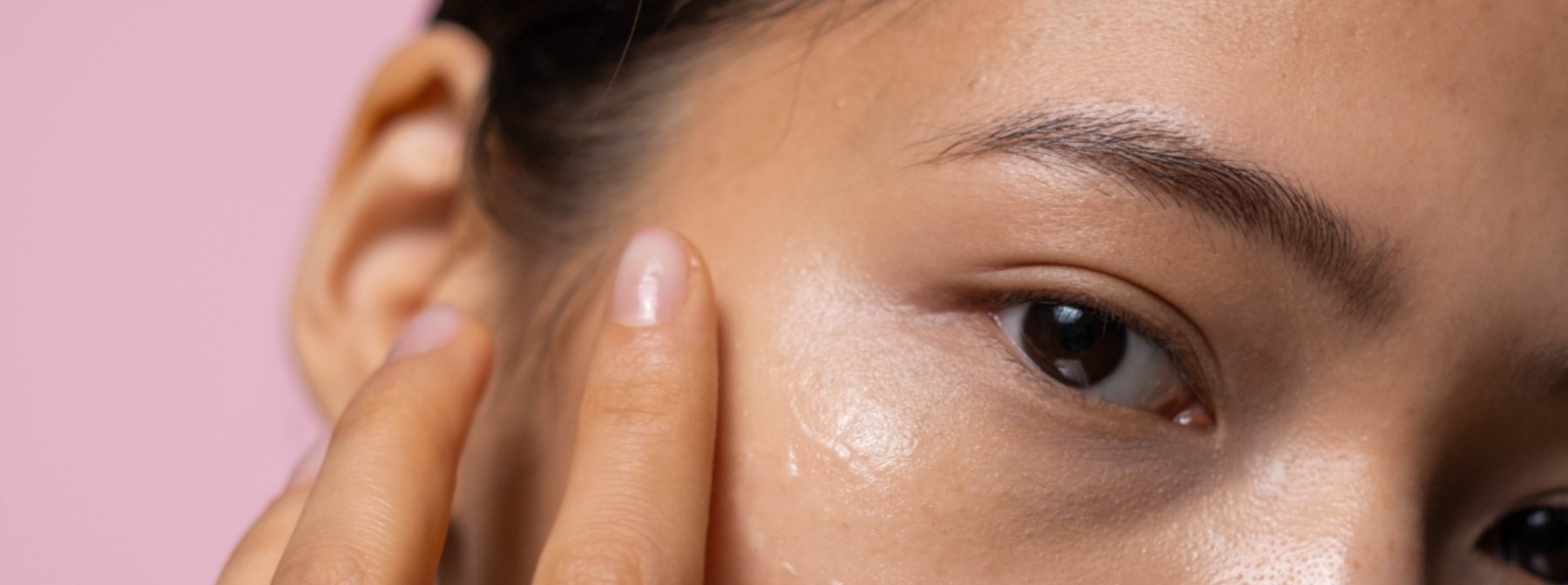
There are a lot of factors that can contribute to dry skin, such as allergies, aging and skin conditions, and all of these can cause discomfort. The skin under your eyes is thinner and more sensitive than the rest of your body, which means it’s not as effective in absorbing and retaining moisture. In this article we will talk about the common causes of dry skin under the eyes and how to treat it.
What causes dry skin under the eyes?
The skin around the eyes is particularly thin and delicate and requires more care. This can make it more prone to irritation, redness and flakiness. We have listed some common causes of dryness under the eyes below.
Dermatitis
Dermatitis is a general term for skin inflammation. There are many different types of dermatitis, such as atopic (a common form of eczema), contact and seborrheic. Depending on the type, skin can appear red, cracked and swollen. Certain medications and treatments can help to ease these symptoms.
Blepharitis
Blepharitis is known as an inflammation of the eyelids. It is a common condition that makes skin visibly flaky and red with dry patches under eyes. Remember to clean your eyes daily and avoid wearing makeup and contact lenses can help to treat and prevent blepharitis.
Conjunctivitis
Another common skin condition, conjunctivitis causes the inflammation of the tissues lining the eyelid, causing the skin around the eyes to look crusty and sore. You can allow the condition to clear up naturally (this usually takes between 1-2 weeks) or take prescribed medicine.
Eczema
Affecting both children and adults, eczema is a skin condition that can lead to dryness and itchiness. The condition weakens the skin’s barrier function, which leads to moisture loss. There are many different types of eczema so treatments may vary. However, if you suffer from some form of eczema around the eyes, avoid wearing makeup and use gentle, non-stripping cleansers.
Psoriasis
Psoriasis is believed to be related to a problem with the immune system. Found all over the body, including the eyes, the condition can cause dryness and cracking, and skin may appear flaky. Follow the guidance provided by your doctor on how to treat psoriasis.
Rosacea
Not only can rosacea affect the skin, but the condition can also affect the eyes themselves. Swollen, red eyelids and bloodshot eyes are common symptoms of rosacea, and skin may appear crusty too. Applying a warm compress to the eyes and using prescribed antibiotics can help treat rosacea in this delicate area.
Weather Conditions
Whether you are in a hot, cold or air-conditioned environment, these external factors can all contribute to dry skin. Remember to moisturize when needed and apply SPF.
Other Causes
- Age
- Nutrient deficiencies
- Smoking
- Medications such as statins, diuretics and antihistamines
How to treat and prevent dry skin under eyes
Here are some steps you can incorporate into your everyday routine to help treat and prevent dry under eye skin.
- Moisturize regularly: Use a formula that is specially designed for the eye area and look for hydrating ingredients such as hyaluronic acid and ceramides.
- Use a gentle cleanser: Cleansing is an important step of your skin care routine not to be missed. Be careful not to over-wash and avoid products with soaps and fragrances.
- Apply SPF: The sun can contribute to skin dryness, so it is important to apply SPF daily.
- Choose your skin care routine carefully: Ingredients such as retinol can be quite drying on the skin. Do your research when investing in new products and build up your skin’s tolerance.
- Use a humidifier: Perfect for use during winter or for those who live in naturally dry climates, these tools help to add extra moisture into the air.
- Maintain a healthy diet: Remember to drink lots of water and eat plenty of vitamins.
SkinStore’s expert picks on products for dry skin under eyes
Need help finding the perfect moisturizer for the skin under your eyes? Here are some of our picks for the best eye products to help nourish dry-feeling skin.
Neocutis Lumière Firm Riche Extra Moisturizing Illuminating and Tightening Eye Cream
This highly moisturizing treatment utilizes a blend of peptides and growth factors to smooth and brighten the eye contour area.
SkinCeuticals A.G.E. Eye Complex for Dark Circles
Promote the illusion of a well-rested complexion with this eye cream. Imparting a subtle radiance, the formula minimizes visible signs of fatigue.
SkinMedica TNS Eye Repair
Ideal for those with dry, mature skin, this powerful cream delivers a much-needed boost of hydration, while helping to firm and unify the skin’s appearance.
EltaMD Renew Eye Gel
Combining natural extracts with an abundance of peptides, this gel diminishes the look of dark circles, fine lines and puffiness around the eyes.
Revision Skincare D.E.J Eye Cream
A multi-purpose formula perfect for sensitive skin types, designed to target visible signs of aging and boost moisture.
Obagi Medical ELASTIderm Eye Treatment Cream
This skin-quenching treatment utilizes a bi-mineral complex to visibly improve skin elasticity and wrinkles. Lending a smoothing effect, the eye cream also reduces puffiness.
ARCONA Eye Dew Plus
Vitamin C unites with actives Dermaxyl® and Cavamax® to rejuvenate the eye area. Fine lines are minimized and dullness is illuminated with this nourishing formula.
BIOEFFECT EGF Eye Serum
Moisturize, brighten and firm with this anti-aging serum. Equipped with a cooling rollerball applicator, the serum leaves skin feeling soothed and refreshed.
Shop all Eye Care on SkinStore.
Love Skincare? Discover our edit of the Best Treatment for Wrinkles around Mouth.

Related Articles






